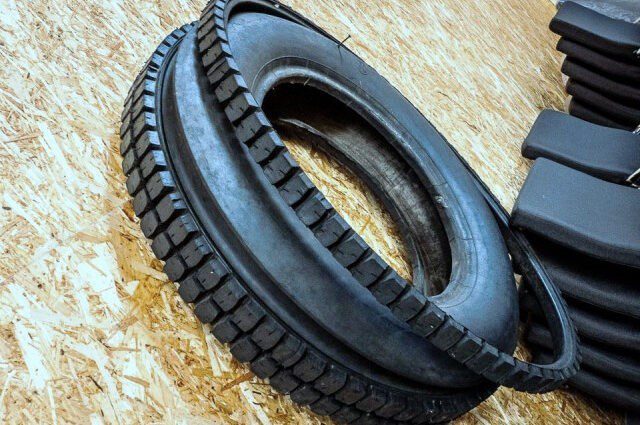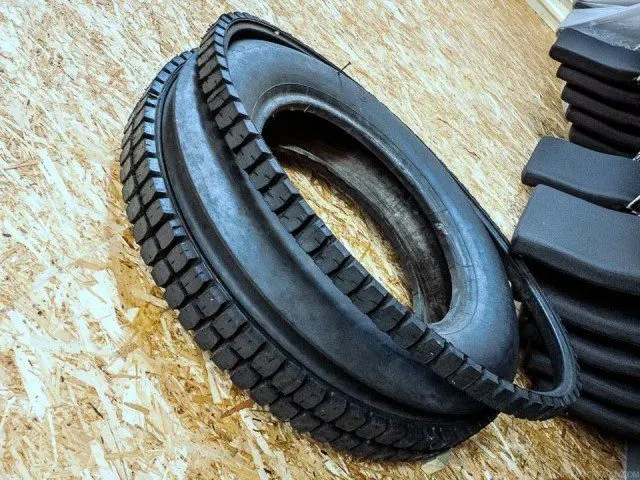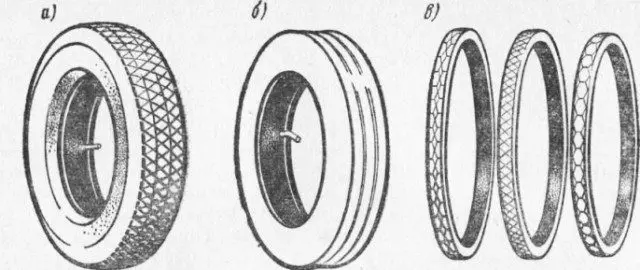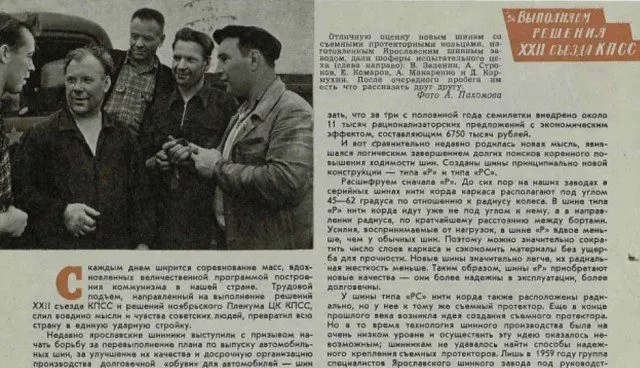
How the Soviet Union made a tire with a power reserve of 250 km
Currently, the average lifespan of a car tire before the tread wears out too much is around 40 kilometers. And that's a nice improvement over the early 000s when the tires barely lasted 80 km. But there are exceptions to the rule: In the Soviet Union, tires up to 32 000 km long were developed in the late 50s .. Here is their story.

RS tire of the Yaroslavl plant, preserved to this day.
In the late 50s, the number of cars on Soviet roads increased and the economy finally began to recover from the war. But it also leads to a serious thirst for rubber. Countries that are large producers of rubber are increasingly moving beyond the Iron Curtain (this is also one explanation for the continued interest of the Soviet Union in Vietnam over the next decade). The economic recovery is hindered by the constant acute shortage of tires for passenger cars and especially trucks.

Under these conditions, tire factories, for example, in Yaroslavl (Yarak), are faced with the task of looking for ways not only to increase production, but also to improve products. In 1959, a prototype was shown, and in 1960, the production of tires of the experimental RS series, created under the direction of P. Sharkevich, began. It was not only radial - a great novelty for the Soviet production of that time - but also with replaceable protectors.

An article about the project in the magazine "Za Rulom" for 1963, which naturally begins with the phrase: "Every day the competition of the masses, inspired by the majestic program of building communism in our country, is expanding."
In practice, the outer surface of this tire is smooth and has three deep grooves. They rely on three ring protectors - with a metal cord inside and with a regular pattern on the outside. Due to the used more rigid mixture, these protectors last longer - 70-90 thousand kilometers. And when they wear out, only they are replaced, and the rest of the tire remains in service. The savings on tires are huge. In addition, interchangeable treads give trucks flexibility, as they come in two varieties - off-road pattern and hard surface pattern. It's no secret that asphalt roads are not the dominant type in the USSR, so this option is very useful. The replacement itself isn't too complicated - you just bleed the air out of the tire, take off the old tread, adjust the new one and pump it up.

RS tires were mainly intended for the GAZ-51 truck - the basis of the Soviet economy of that time.
The factory produces more than 50 sets of PC tires. In an enthusiastic article in 000, the magazine "Za Rulem" reported that when testing trucks along the route Moscow - Kharkov - Orel - Yaroslavl. tires lasted an average of 1963 km, and some - as much as 120 km.
| 1. Thailand - 4.31 2. Indonesia - 3.11 3. Vietnam - 0.95 4. India - 0.90 5. China - 0.86 6. Malaysia - 0.83 7. Philippines - 0.44 8. Guatemala – 0.36 9. Cote d'Ivoire - 0.29 10. Brazil - 0.18 * In million tons |
The very idea of a replaceable tread is not new - similar experiments were carried out in Great Britain and France at the end of the XNUMXth century. And they are abandoned for the simple reason that the dynamic properties of the tire inevitably deteriorate. So it is with the Yaroslavl RS - truck drivers are directly warned to stop smoothly and not serve and overload on turns. In addition, the tire bead is often damaged by abrasion. However, the trade-off is worth it - it's better to drive the goods slowly than to soak in the warehouse while the trucks are out of tires. And only after the supply of rubber from Vietnam was established, Sharkevich's project gradually faded into the background and was forgotten.
